July/August Issue of Childhood Education Innovations Features Articles on Mindfulness, Artificial Intelligence, Distance Learning, and More
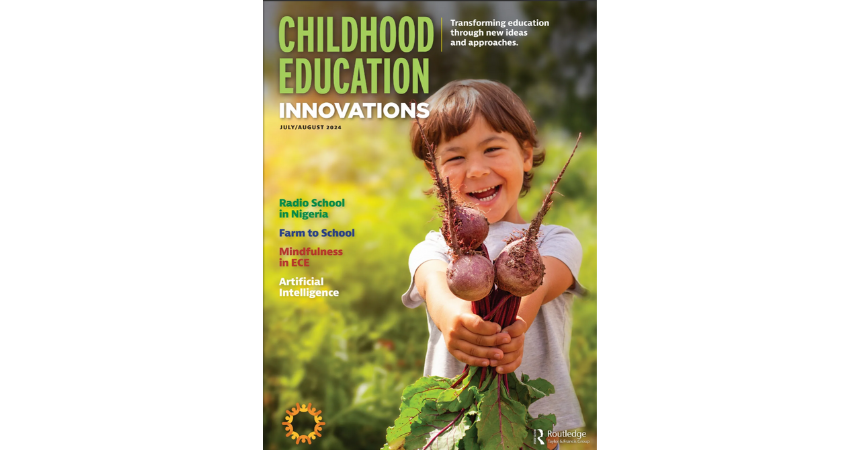

The July/August 2024 issue of Childhood Education: Innovations features articles on mindfulness, artificial intelligence (AI), distance learning, and more.
Childhood Education Innovations is an education magazine that provides unique, stimulating information about educational programs around the world. Articles explore solutions to specific challenges affecting schools, teachers, and learners and showcase the most recent innovations being developed and implemented to address those challenges.

“Radio as a Tool for Alternative Education in Nigeria”
ACE Radio School is an alternative form of education that caters to the learning needs of out-of-school children and adolescents (age 6-18 years) by providing access to quality basic and secondary education through the radio. It began as an emergency education initiative for children in underserved areas who could not access online learning while quarantined at home during the COVID-19 pandemic. It is now designed to address poor access to quality education in marginalized communities, by providing free, quality, and safe education for children who are otherwise unable to access formal education.
 “Eating Learning Growing: Culturally Relevant Farm to School Education”
“Eating Learning Growing: Culturally Relevant Farm to School Education”
Farm to school education connects learning to the real world by helping students foster a deeper appreciation for local agriculture and healthy eating habits. Students experience and understand how nature supports life and the food they eat. Educators can incorporate local food into the curriculum as a hands-on and engaging approach to teaching essential concepts about food, health, agriculture, and nutrition. When educators bring cultural relevance to farm to school education, they can create meaningful and engaging learning experiences for all students. And when this happens, students’ health, attendance, participation, and academic success can all improve.
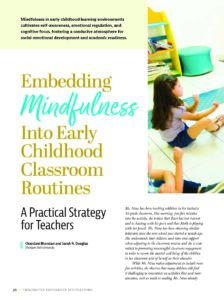 “Embedding Mindfulness Into Early Childhood Classroom Routines: A Practical Strategy for Teachers”
“Embedding Mindfulness Into Early Childhood Classroom Routines: A Practical Strategy for Teachers”
Early childhood classrooms demand considerable emotional and physical engagement from both educators and children throughout the day. At times, this can lead to stress, anxiety, restlessness, and fatigue. According to transactional theory, a reciprocal relationship exists between teachers and children in the classroom. Teachers’ mental health and well-being directly impact children’s mental health and well-being, and vice versa. This interconnectedness emphasizes the urgent need to address the mental health needs of both educators and children. Mindfulness practices can be employed as an effective tool for doing so.
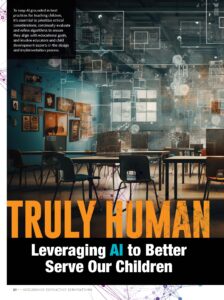 “Truly Human: Leveraging AI to Better Serve Our Children”
“Truly Human: Leveraging AI to Better Serve Our Children”
Globally, less than 10% of schools are developing uniquely local artificial intelligence (AI) policies and addressing use cases. Policies and guide rails for using AI in education that are in place have rightfully called for us to address the ethical implications and biases that can arise with regard to AI tools and systems. The landscape of what AI is, how it can be used, and how we can leverage it in education while being truly human in our approach necessitates background knowledge, experimentation, and a focus on curating tools that empower (not power) collective efforts to serve all children.
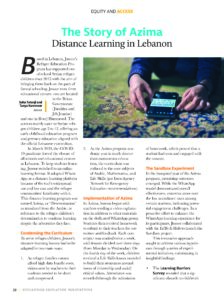 “The Story of Azima: Distance Learning in Lebanon”
“The Story of Azima: Distance Learning in Lebanon”
In March 2020, the COVID-19 pandemic forced the closure of all schools and educational centers in Lebanon. To keep students learning, Jusoor switched to an online learning format. It adopted WhatsApp as a distance learning platform because of the tool’s widespread use and low cost and the refugee communities’ familiarity with it. This distance learning program was named Azima, or “Determination” as translated from the Arabic, in reference to the refugee children’s determination to continue learning despite the adversities they face.
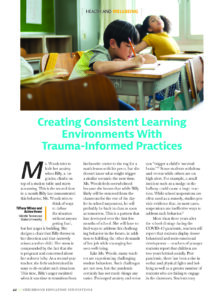 “Creating Consistent Learning Environments With Trauma-Informed Practice”
“Creating Consistent Learning Environments With Trauma-Informed Practice”
Post-pandemic, teachers still find that students display slower behavioral and socio-emotional development, engage in more verbal and physical fights, and experience difficulty engaging in the classroom. There is increased teacher/administrator turnover and insufficient behavioral interventions and training; also, teachers and administrators are not on the same page about establishing school norms. School administrators and faculty must recognize that previously accepted responses to challenging behaviors, such as repeated school suspensions without proper mental health support, are ineffective. Trauma-informed practices can stabilize schools and create consistent, safe learning environments.
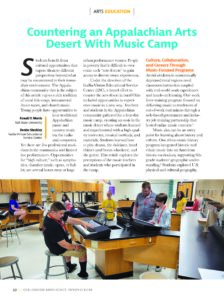 “Countering an Appalachian Arts Desert With Music Camp”
“Countering an Appalachian Arts Desert With Music Camp”
Under the direction of the Gallia-Vinton Educational Service Center (ESC), a broad effort to counter the arts desert in rural Ohio included opportunities to experience music in a new way. Teachers and students in the Appalachian community gathered for a four-day music camp, creating an oasis in the music desert where students learned and experimented with a high-quality instructor, musical methods, and materials. Students learned how to play drums, the dulcimer, hand chimes (and boom whackers), and the guitar. This article explores the perceptions of the music teachers and students who participated in the camp.
 “Inquiry and Instamatic Photography: Cultivating Social Studies Concepts in a Preschool Classroom”
“Inquiry and Instamatic Photography: Cultivating Social Studies Concepts in a Preschool Classroom”
Social studies learning in the early years has great potential to offer active, playful, and meaningful experiences for children and can prepare young children to be curious and engaged community members. When social studies instruction is limited to repeating facts about the past or present or is pushed aside for other content areas like mathematics and literacy, however, many opportunities for inquiry and activity-based learning are lost. While preschool educators may have to overlap social studies instruction with other subjects due to constraints in time or resources, educators can find way to support engaged learning by offering children active, playful, and meaningful experiences. In the early childhood classroom, Polaroid photography can support students’ sense of self, social studies learning, community roles, and working together.
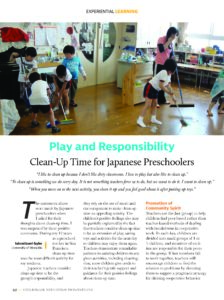 “Play and Responsibility: Clean-Up Time for Japanese Preschoolers”
“Play and Responsibility: Clean-Up Time for Japanese Preschoolers”
Japanese teachers consider clean-up time to be the group’s responsibility, and they rely on the use of music and encouragement to make clean-up time an appealing activity. The children’s positive feelings also may be partially explained by the fact that teachers consider clean-up time to be an extension of play, saving toys and activities for the next day so children may enjoy them again. Teachers demonstrate remarkable patience in assisting children in any given activities, including cleaning; thus, some children give credit to their teacher’s gentle support and guidance for their positive feelings about clean-up time.
 “Intergenerationality and the Age-Inclusive Early Learning Center”
“Intergenerationality and the Age-Inclusive Early Learning Center”
A retired educator, the author had been wondering how to make meaningful changes in her life. She wanted to know if it was possible to be born again — to make a contribution to a new generation. In this article, she describes her experiences joining the team of a child care center that strives to be a culturally, linguistically, age-inclusive learning space where everyone is a learner: growing, holding each other up, supporting each other, and believing in each other.
Two articles in each issue are freely available to the public at the time of publication. Subscribers gain access to all article through print and online versions of the magazine.